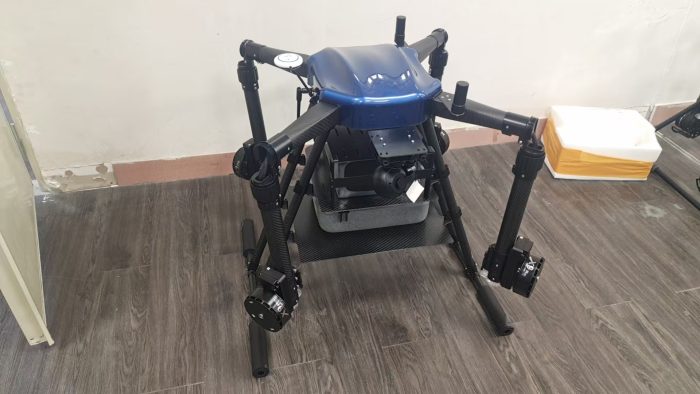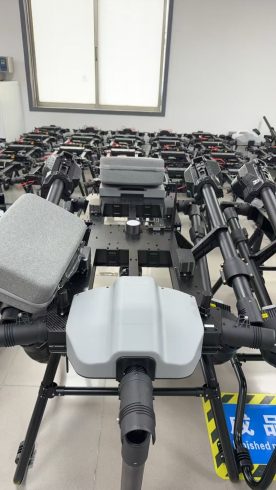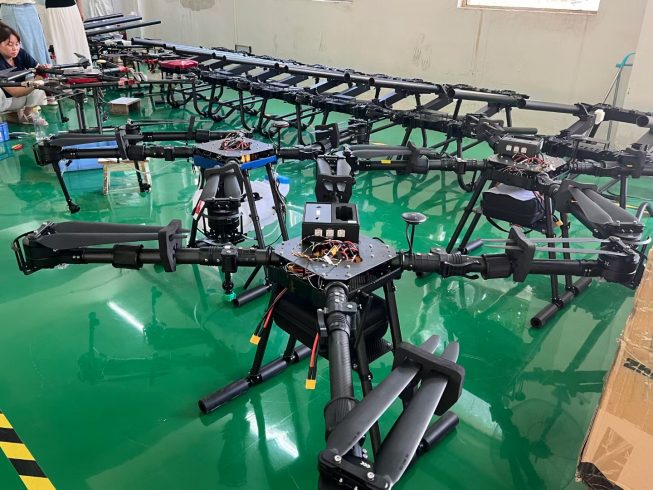In a world where agriculture feeds 8 billion people, innovation can’t afford to stay theoretical. It must take root in fields, learn from farmers, and soar. At our factory, we don’t just design drones—we engineer partners for growers. Every screw, sensor, and line of code traces back to a single question: “What does the farmer need to thrive?” Here’s how we turn blueprints into barn-raising, field-ready solutions.
The Spark: When Engineers Met the Soil
Our journey began not in a lab, but in a wheat field. Years ago, our founder, a former aerospace engineer, watched a farmer spend hours manually scouting for aphids—bending, squinting, and losing time he could’ve spent harvesting. “Technology should help, not hinder,” he thought. That day, we shifted our mission: to build drones that didn’t just fly, but understood farming.
Today, our factory floor hums with cross-disciplinary teams: agronomists study crop cycles, roboticists tweak flight algorithms, and designers craft interfaces farmers can use with calloused hands. But our greatest teacher? The farmers themselves.
Designing for the Field, Not the Showcase
Most agricultural drones look sleek—but sleek doesn’t always mean functional. We prioritized context over cosmetics. Here’s how we reimagined drone design for real-world farming:
1. Tough Enough to Tackle the Elements
Farms are unforgiving: mud splatters, rain lashes, and branches snag. Our drones feature reinforced carbon-fiber frames, IP68 waterproofing, and skid landing gear to handle uneven terrain. In Montana, a rancher tested a prototype during a hailstorm—our drone emerged unscathed, while others grounded for repairs. “It’s like a tractor with wings,” he joked.
2. Simple Enough for Any Skill Level
We rejected complex controls. Our drones pair with a ruggedized tablet app featuring visual mission planning: drag a finger over a field map, and the drone auto-plots its route. Voice commands (“Scan for weeds”) work offline, thanks to pre-loaded crop databases. In the Philippines, a grandmother who’d never touched a drone now uses ours to monitor rice paddies—“Easier than texting my grandkids!” she laughs.
3. Smart Enough to Adapt
No two farms are alike. Our drones use machine learning to “learn” a field’s unique patterns: soil type, crop variety, even seasonal changes. Over time, they suggest optimized flight paths, spray rates, or scouting schedules. In Iowa, a corn farmer’s drone now alerts him to early signs of nitrogen deficiency before leaves yellow—boosting yields by 18% without extra inputs.
The Feedback Loop: Farmers as Co-Inventors
We don’t just build drones—we iterate with farmers. Every unit sold comes with a “Field Journal” app, where users log issues, suggest features, or share success stories. This feedback fuels our R&D:
-
Problem: A Kenyan tea farmer reported drones overheating during midday missions.
Solution: We added heat sinks and scheduled auto-cooldowns during peak sun.
-
Problem: A Canadian canola grower wanted to plant seeds, not just spray.
Solution: We developed a detachable seed-dispensing module, turning drones into multi-taskers.
-
Problem: Indian cotton farmers struggled with battery life in remote villages.
Solution: We introduced solar-charging cases, extending flight time by 40%.
Impact Beyond Yields: Strengthening Communities
Our drones do more than optimize farming—they empower people. In Ethiopia, a cooperative of women farmers uses our drones to monitor teff fields, securing fair-trade prices for higher-quality crops. In Vietnam, young entrepreneurs lease drones to smallholders, creating rural tech jobs. And in the U.S., veterans transitioning to farming praise the drones’ ease of use: “I served overseas—this feels like flying a mission, but for my family’s farm.”
Environmentally, the wins are profound. Collectively, our drones have cut pesticide use by 1.8 million liters globally since 2020—reducing runoff that harms rivers and marine life. For farmers like Maria in Costa Rica, this means growing coffee and protecting the cloud forests her community relies on.
The Horizon: Flying Toward a Smarter Future
We’re not done innovating. This year, we’re launching:
-
Swarm Drones: Teams of 10+ working in sync to map 1,000 acres in hours, slashing scouting time.
-
Carbon-Neutral Drones: Powered by biofuels, cutting emissions by 50% compared to electric models.
-
Farmer Training Hubs: Partnering with NGOs to teach drone operation in rural schools—ensuring the next generation grows up fluent in ag-tech.
Farming is about legacy. So is our factory. Every drone that takes flight carries more than sensors—it carries the hopes of a farmer, the lessons of the land, and our promise to keep building tools that serve, not just sell.
Because the best innovations don’t just hover above fields. They grow with them.
THE END










暂无评论内容